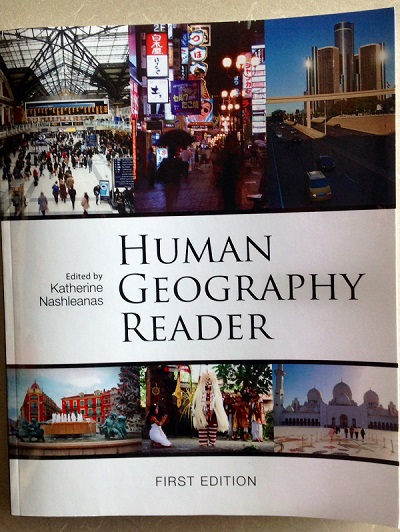
Katherine Nashleanas, geography lecturer, has recently edited the first edition of "Human Geography Reader," a compilation of articles designed to enhance students' experience in human geography courses.
"This reader brings basic geography concepts to the fore and invites the reader to apply this perspective to real-world events and processes," Nashleanas said.
In the reader, students will be exposed to an array of real-world situations related to human geography – from the development of tourism in Liverpool, England to the importance of location in the brand names of coffee grown in Indonesia and sold exclusively in Tokyo and how the physical environment itself is used to ensure a quality product.
Students will also learn how cell phones are changing the connections between rural, urban and expatriate communities of Senegal Africa, and how it is that world cities are now growing networks between them that could rival the economic power of a country. Additionally, students will read about debates in three separate countries over the place of Islam in the modern world and the place of women in the Islamic world.
"It is not possible to take students on field trips to England, Indonesia, Nigeria, Senegal or Japan, but I hope that some of these readings will provide them with a taste of other lands," Nashleanas said.
As part of the editing process, Nashleanas considered many articles – penned by authors from across the world – for possible inclusion in the reader.
"The process fired my imagination and reminded me how deep and broad geography is – how it invites one into the world, to see the world from new, more holistic perspectives," she said.
In thinking about which articles would be most interesting for students, Nashleanas said she focused on preserving the basic themes of geography.
"I thought back to my days as an undergraduate and tried to think about what guidance I would most appreciate," she said.
Many human geography textbooks use introductory chapters to discuss important concepts in geography such as space and place, spatial perspectives, region, the importance of location, of interaction, mobility, globalization, human-environment interactions and landscape.
While those concepts are crucial to understand, Nashleanas said they are often overlooked in later chapters and rarely – if ever – addressed again.
"These introductory chapters are all very good, but oftentimes attention is not specifically drawn to these concepts in the remaining textbook chapters themselves, per se," she said. "That's one of the purposes of these readings: to draw attention back to the fundamentals that are critical to a geographic way of seeing the world, while also covering some interesting and – hopefully – entertaining subjects that complement the readings students are doing in their textbooks."
The book is a suitable complement for all college-level introductory human geography courses, as well as Advanced Placement (AP) human geography courses offered at the high school level.
"My main goal is to deliver a rich and robust introductory course in human geography, enabling students to comprehend their world more clearly with all of its complexities intact," she said.
— Mekita Rivas, Natural Resources